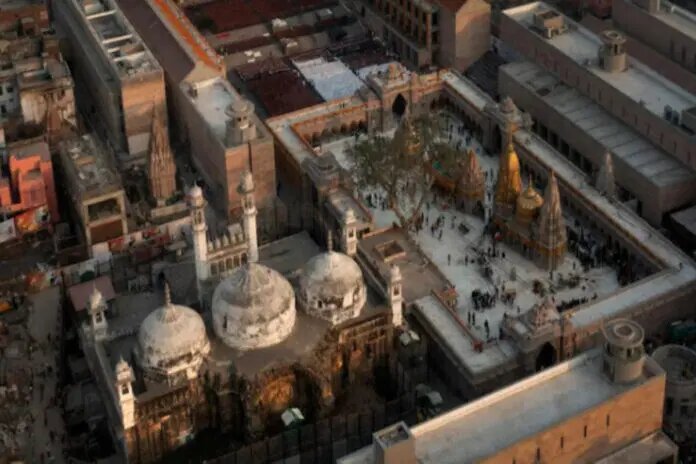The Gyanvapi Mosque, a historic structure located in Varanasi, India, has been at the centre of a controversial legal battle between Hindu and Muslim communities for decades. The dispute revolves around the origin of the mosque and its alleged connection to the ancient Kashi Vishwanath temple. Recently, the investigation into the mosque’s premises was resumed, causing new tensions between the two religious’ groups. In response, the mosque’s governing body approached the Supreme Court to address their concerns and protect their religious rights. This article examines the history of the dispute, the ongoing investigation, and the importance of Supreme Court intervention. The Gyanvapi Mosque, believed to have been built in the 17th century by the Mughal Emperor Aurangzeb, is located next to the revered Kashi Vishwanath Temple, one of Hinduism’s holiest sites. The dispute over its origin’s dates back to colonial times, when British authorities took control of religious properties under the Places of Worship Act 1991. The law prohibits the conversion of any religious site and maintains maintain the status quo as it existed at the time. Therefore, Gyanvapi Mosque is still a mosque and Kashi Vishwanath Temple is still a place of worship for Hindus.

In 2019, a local lawyer applied to the Varanasi Civil Court for permission to investigate the Gyanvapi Mosque to determine if it was built on a pre-existing Hindu temple. The petition is based on the claim that the construction of the mosque was the result of the destruction of the original temple. The court initially suspended the investigation, but later allowed the Archaeological Survey of India (ASI) to conduct the examination. The move was met with strong opposition from the mosque’s governing body, who said it violated their religious rights.
Intervention of the Supreme Court:
When the investigation was resumed in 2024, the mosque’s governing body went to the Supreme Court, demanding that the review stop. The agency argued that the investigation was likely to disrupt the sanctity of the mosque and violate their right to freely practice their religion. They expressed concern that the findings could be used to fuel demands for the mosque’s demolition, increasing community tensions in the area. The Supreme Court recognized the sensitivity of the case and agreed to hear the defence, ensuring a fair assessment of the rights and concerns of both parties.
The Gyanvapi Mosque case raises important questions about religious harmony and the preservation of the constitutional rights of India’s diverse communities. India’s constitution guarantees its citizens freedom of religion and the right to independently manage religious affairs. However, in cases of historical disputes involving religion, it becomes difficult to strike a balance between preserving history and respecting contemporary beliefs. The role of the Supreme Court in such cases is essential. He acts as a neutral arbitrator, considering all the evidence and arguments presented by both parties before making a fair and unbiased decision. Courts must consider historical evidence, archaeological findings, and constitutional principles to ensure justice and maintain community harmony.
The Gyanvapi Mosque dispute represents one of many historical conflicts that still exist in India, reflecting the complexity of its rich cultural tapestry. The resumption of the investigation has increased tensions, prompting the mosque’s governing body to resort to the intervention of the Supreme Court. It is the court’s responsibility to navigate through historical complexity and contemporary religious sentiments to arrive at a decision that respects both the country’s past and the constitutional values it upholds. As the legal battle continues, all parties still need to exercise restraint and foster a climate of mutual understanding and respect, recognizing the importance of preserving history while protecting religious rights.












